Instagram, Indifference, and Postcritique in US Architectural Discourse
The following text is reproduced from The Hybrid Practitioner: Building, Teaching, Researching Architecture (2022), edited by Caroline Voet, Eireen Schreurs, and Helen Thomas. The publication is available in print or as an ebook, here. You can find Joseph Bedford on Instagram here.
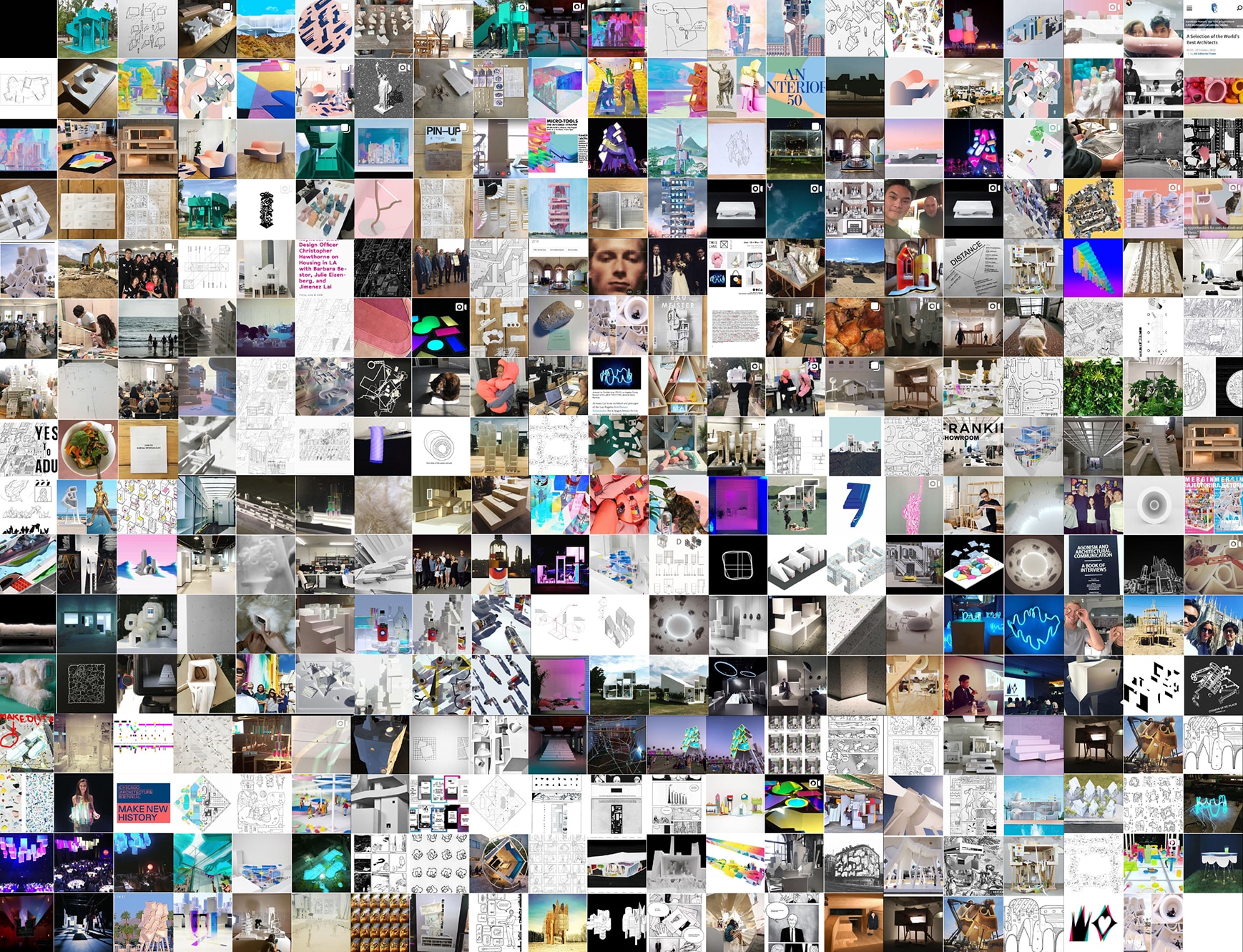
From the 1970s through the 1990s, many architects in the United States who aspired to produce critically acclaimed or distinguished architecture found themselves reading (and writing) a lot. As the New York–based architect and professor at Princeton University Michael Meredith put it, reflecting on the 1990s, ‘We read almost anything related to Critical Theory. […] whatever was published by Zone, Semiotext(e), or Verso. And we read journals: ANY, Assemblage, October. We read a lot.’[1] Meredith’s recollections of the 1990s can be taken as exemplary of a phenomenon that has been overlooked in the history of theoretical-critical practice in architecture and the discourse of its ‘end’—that print-based media played a central role in facilitating the way that architects discoursed about various theoretical and critical issues, and that the particular set of journals and publishing houses helped to constitute an effective public sphere within which a theoretical discipline could critique reigning forms of power.
The idea of a theoretical-critical practice was an explicitly self-conscious construct within US architectural discourse in the years from the 1970s to the 1990s. Diana Agrest, for example, one of the principal actors within the influential Institute of Architecture and Urban Studies (IAUS) in New York titled one of her first lecture courses at Princeton ‘Theoretical Practice of Architecture’ in 1972. And, alongside her IAUS colleagues, she described the position of its journal, Oppositions, as dedicated to ‘the importance of theory as the critical basis of significant practice.’[2] In the years since the turn of the millennium, however, the United States became the epicentre of a discourse about the end of theoretical-critical practice.[3] The assumption within this discourse of ‘post-critique’ has often been that the so-called end of critical theory in architecture was primarily the result of the internal conditions of the theoretical discourse, that the ideas themselves and their purported effects failed.[4]
Yet too little has been said about the evidently transforming nature of the external conditions underpinning such a theoretical-critical discourse as a public sphere maintained by certain media such as print. The turn of the millennia was, we should recall, a central moment in the transition of media from print to digital forms: Google was founded in 1998, ‘Web 2.0’ became a common phrase from 1999 onwards, Facebook was founded in 2004, and Twitter in 2006. Indeed, after remarking on the degree to which he ‘read a lot’ in the 1990s, Meredith highlighted this transition as central to the experience of young practitioners today, writing of the present situation:
‘All positions have become relative; individual and institution alike are atomized into an array of indeterminate positions. […] We all take part in the architectural potluck, consuming the very same images; all our references belong to a global market.'[5]
It is this hollowing out of the public sphere over the last two decades of media-technical change that, as Frida Beckman argues, is most responsible for the discourse of postcritique.[6] The public sphere, going back to the earliest constitution of a critical literary discourse during the Enlightenment, has always had a critical relationship to the reigning forms of power.[7] Yet the most threatening forms of power today are no longer the absolutist powers of kings or churches, nor the disciplinary power of institutions that Michel Foucault once analysed. Today, and especially after half a century of neoliberal governance, globalisation and the development of networked computation, the reigning form of power is best understood in terms of what the late Gilles Deleuze described as ‘control’—the power to modulate and manipulate affects within free flows of movement.[8]
Today’s popular discourse on the negative effects of our new media conditions developed by writers such as Shoshana Zuboff, Jaron Lanier, and Richard Seymore captures in various ways what Deleuze had in mind by ‘control society.’[9] They have shown how the platforms of Google, Facebook, and Twitter penetrate the attentional and cognitive resources of individuals by fostering designed addiction to personal devices, and they show how these media actors engage not only in surveillance but also in behaviourist manipulation. Discipline, in the end, might turn out to have been central to the critical institutions of the public sphere, including institutions such as schools and journals, and what comes after in the form of new media and the power of ‘control’ may be even worse.
It has also been argued by several media theorists, such as Marshall McLuhan and Walter Ong, that argument and critique was linked to literacy, and as writing gives way to the circulation of images and information in the electronic age, society also witness the re-emergence of a new ‘tribalism’ that we might also think of as today’s post-truth politics of emotion and affect.[10] Taking the work of all these writers together, we can argue that the construction of individually authored long-form writing or the creation of substantial original creative works addressed to an audience through the relatively unambiguous and rational nature of written communication have been central to the formation of a critical public sphere, and as architecture shifts from the predominant use of print publications for its discourse to the predominant use of image-based media, its role in forming a critical public sphere is undermined.
In their use of Instagram and other image-based social media like Tumblr, for example, a number of contemporary architectural practitioners can be seen to give up—somewhat uncritically—on the above formula for maintaining a critical public sphere through long-form writing. As the editors of the book Possible Mediums put it:
‘The rapid circulation of online images has replaced the polished presentations common of earlier media forms, such as print. This creates a messy and fecund state of sharing work, facilitated by free flowing and far-reaching platforms of social media. [As a result,] design starts to resemble a collective hive mind more than a traditional notion of “author.”‘[11]
Against such a celebration of the ‘hive mind,’ Jaron Lanier offers a more critical view of the situation, arguing that it is the specific result of the new model of cultural production pioneered by Apple in 2001 with the iPod and iTunes in which cultural production is discretised, decontextualised, and algorithmically remediated. In Lanier’s analysis, the result is the increasingly derivative and unoriginal forms of creative production that we see today.[12] In the larger context of behaviourist manipulation and ‘control,’ the loss of individual authorship would be precisely what a critical stance should seek to challenge.
In what follows, I will turn to four practitioners who are all more or less part of the same architectural network as Meredith: Andrew Kovacs of Office Kovacs, Jimenez Lai of Bureau Spectacular, and Atelier Fala. All of these practices might be said to operate within a ‘post-digital’ mode, in which digital techniques have become so ubiquitous as to no longer serve as instruments of distinction for those who adopt them. All these practices might be described as post-digital for their mixture of digital and analogue forms that partly suggest a desire to critique the smooth aesthetics of high production values within mainstream digital culture. Yet, at the same time, they embrace a savvy appropriation of digital tools. Kovacs and Lai in particular, are within a close circle of practices that Meredith himself has attempted to define as a group, by naming them as part of an attitude he refers to as that of ‘indifference,’ and Lai has also mapped the coherence of this same circle through their mutual participation in a set of conferences and events.[13]
Meredith and the practitioners surrounding him in his network offer a particularly useful window into the long legacy of critical theory in architecture and the turn to post-critique because, as current professors, or students of institutions like Princeton University, or as students of the theorists of the end of theory, they find themselves in the position of aspiring to produce the next body of distinctive work that in some manner inherits the lineage of the architectural neo-avant-garde of the 1970s to the 1990s, yet doing so within the changed media-technical conditions.
First, Jimenez Lai’s use of image-based digital media is symptomatic of its function to blur the boundary between life and work, culture and economy. Lai is the principal architect of the young Los Angeles practice Bureau Spectacular. Of all the various architects addressed here, their use of new media is most exemplary of the casual manner in which they accept this dissolution of the work–life boundary (fig. 17.1). Their feed includes the usual mix of finished work presented in drawings, models, videos, and photographs or celebrations of public recognition in magazines, websites, and awards, but it also includes the seemingly spontaneous photographs of day-to-day activities in the office such as employees having fun building models or installing exhibitions, ‘Camera eats first’ photos, selfies, selfies with celebrities, and cat photos. Much of this blurring is a common feature of many Instagram accounts, yet Bureau Spectacular go a step further in adapting the role of an ‘influencer’: ‘We’ve been selected to become a @LIFEWTR influencer!,’ they write in one of their posts. Lifewtr is a new designer brand owned by Pepsi. Their branding strategy has been to associate their brand with emerging designers within the Los Angeles area who they take to be potential ‘influencers.’ Pepsi has been paying designers to incorporate their product in personalised ways within their creative output.
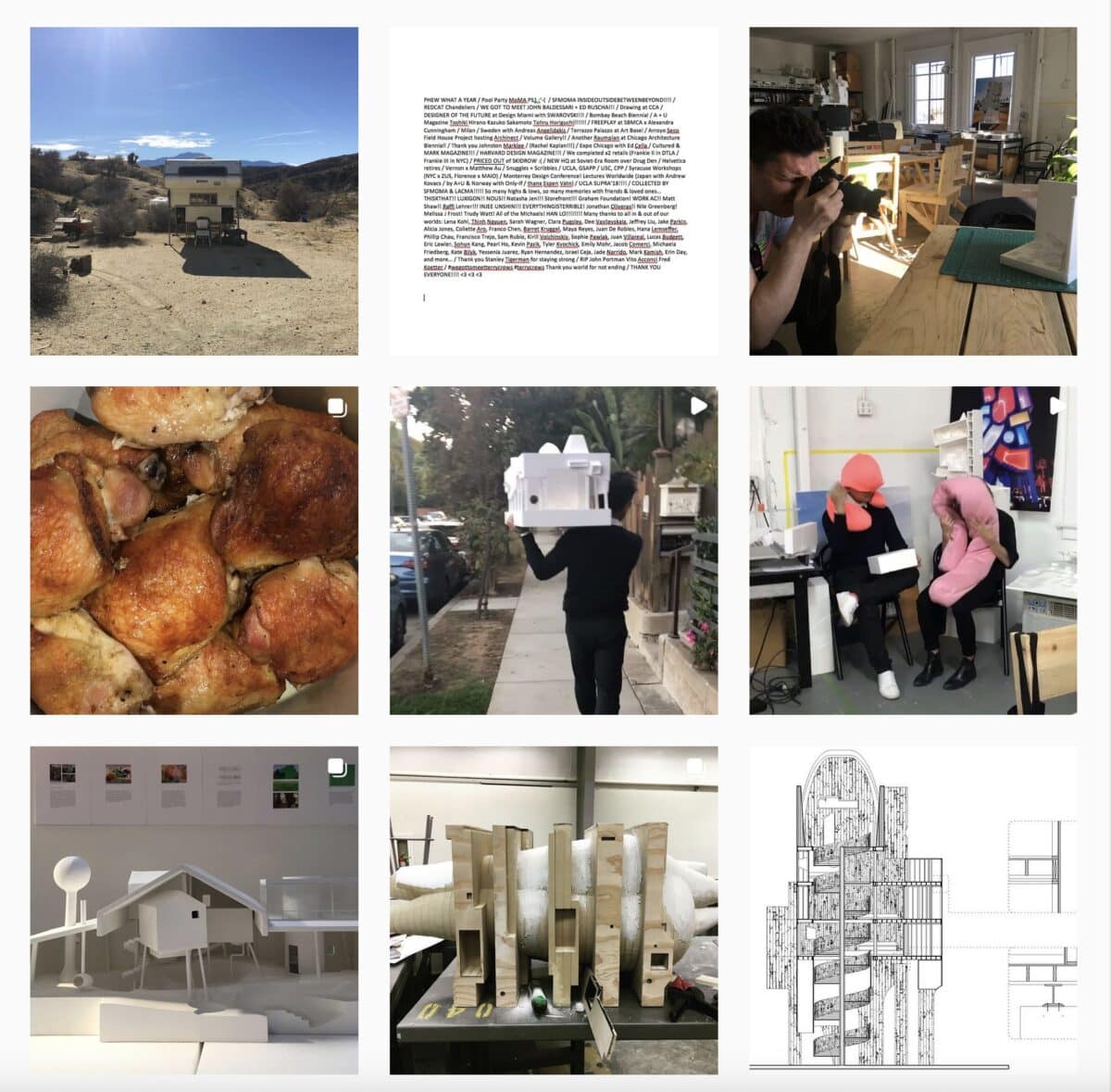
By accepting product placement into their feed (fig. 17.2), however, Bureau Spectacular, in Franco ‘Bifo’ Berardi’s terms, ‘put their soul to work.’ They give over their personal affectations, character, and social reputation to economic exchange.[14] For Berardi, in today’s ‘semiocapitalism’ labour is made increasingly individual and personal because today’s digital labourers perform increasingly skilled and creative forms of production, which, unlike manual labour in the factory system of the nineteenth century, is not as easily exchangeable for the labour of another. For digital labourers, according to Berardi, their labour comes from ‘the most essential part of their lives, the most specific and personalized.’[15]
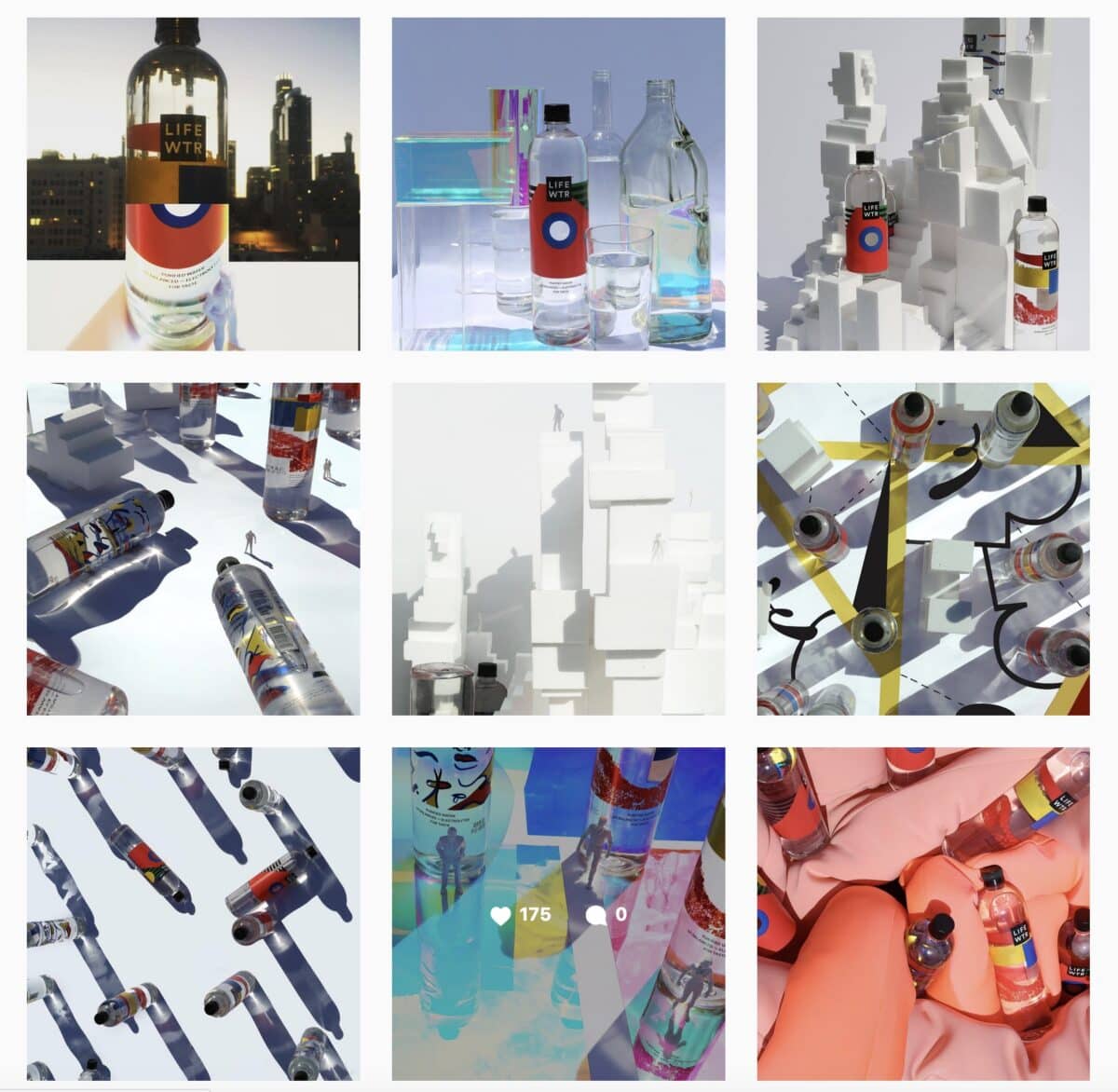
The invitation to play the role of an influencer is surely one sign of the success of an architect’s use of social media—that the size and type of audience that they have fostered can be exchange for economic value. One of the reasons for any architect to reach a larger audience has long been to gain recognition that might lead to economic gains, whether in terms of commissions, invitations to lecture, or academic appointments. Architects used magazines, television, and public relations firms to this end long before Instagram. Yet never before has this relation between producer and audience been framed in such casual, everyday, personal, and intimate terms.
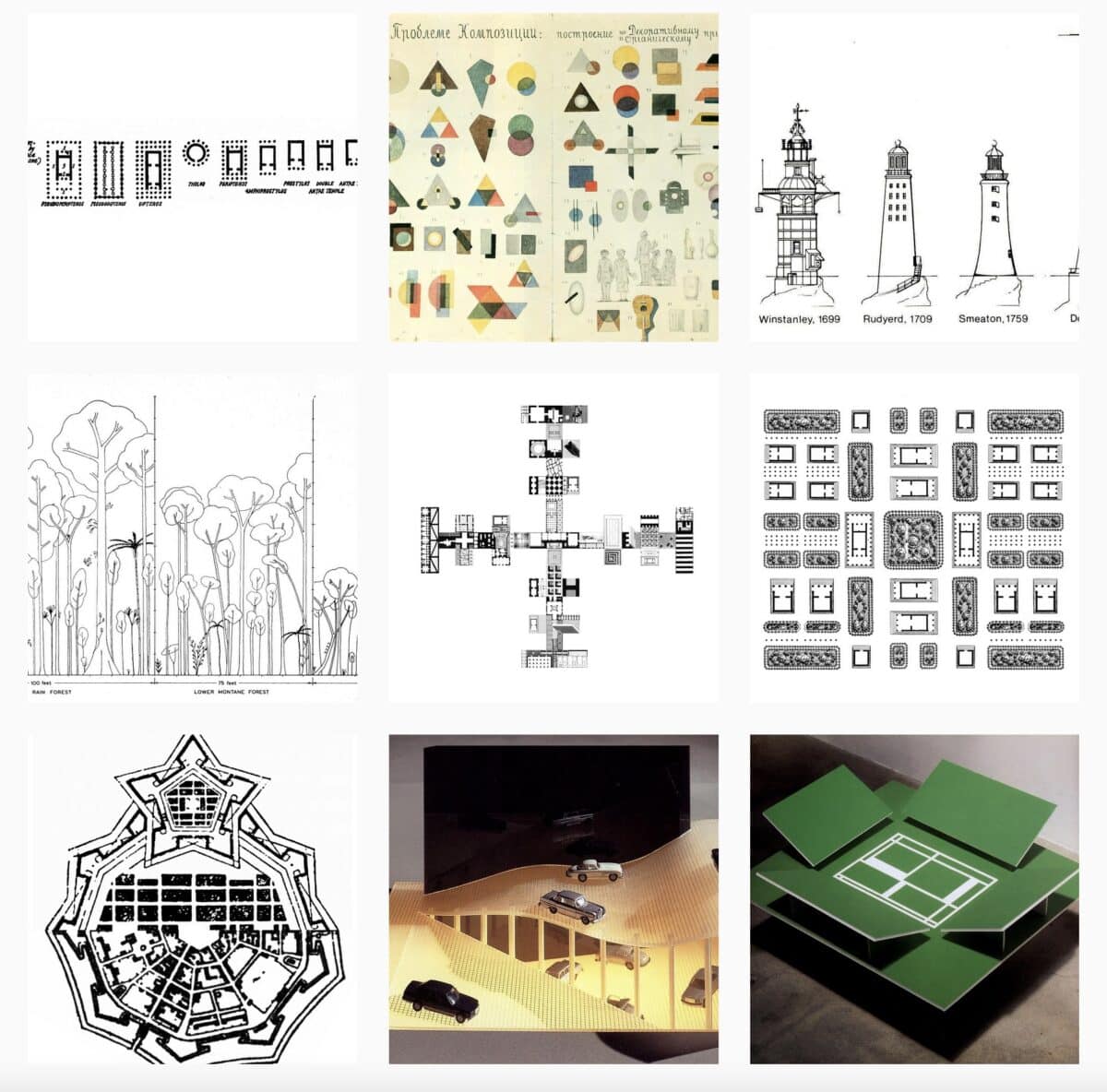
Second, Kovacs’s use of image-based media is symptomatic of the way that it encourages its users to abandon the role of authorship. Kovacs’s initial body of work was almost exclusively based on the reposting of scanned images of existing architectural artefacts (fig. 17.3). He built his extensive following of 230,000 on the Tumblr platform, ‘Archive of Affinities’, by digitising rare archival content, including lowbrow and kitsch artefacts. The forms of taste that facilitate Kovacs’s acquisitions is highly connoisseurial, and in the tradition of Robert Venturi, the low-taste artefacts are appropriated from the perspective of high taste culture, with some measure of irony. What is unique, however, in Kovacs’s acquisitions is his claim that creative work can be produced primarily through the reassemblage of the existing. Some of Kovacs’s compositions, which he has increasingly come to include among his found artefacts, do involve a degree of composition that might indicate an original language, yet his most provocative pieces, upon which he gives greater emphasis in presenting his own work, are those which he himself describes as ‘monstrous’—the seemingly unlimited and unformed aggregations of existing things, accumulated in a way that rejects composition (fig. 17.4). These mountainous assemblages challenge the traditional role of authored architectural creativity, in which parts are organised and composed with respect to the whole in such a way as to create a language with detectable intent and meaning.
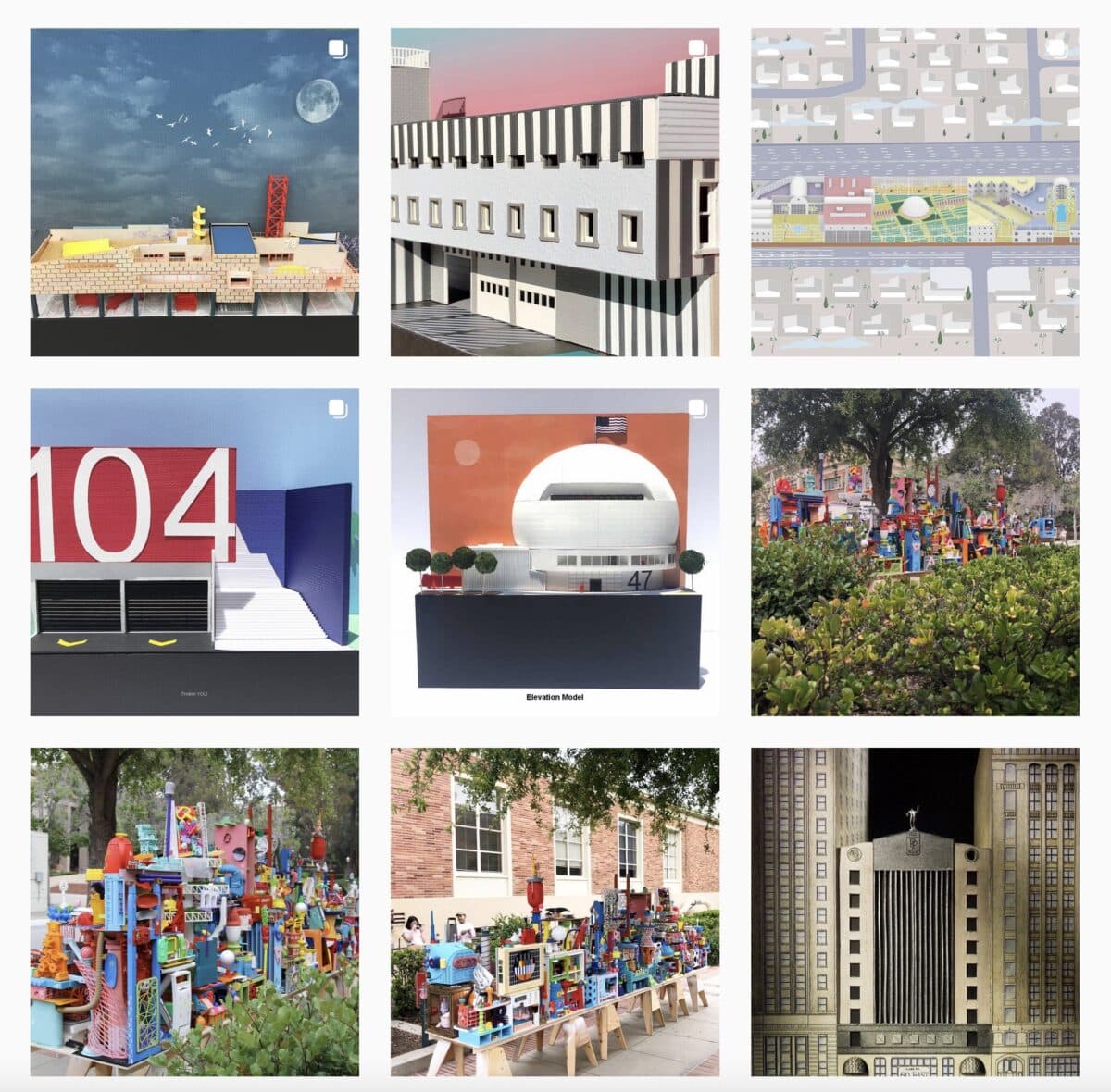
Kovacs’s works instead are presented as one permutation among an infinite number. They are disembodied and given the kind of flattened equivalence that today’s ‘content’ has in general with respect to the platforms and algorithms that constantly reorganise them. Kovacs’s work thus began from the practice of feeding content to followers and, in doing so, celebrating the process of discretisation and decontextualization inherent to the medium and came in its later iterations to embrace those same processes in the way that his architectural objects themselves have been formed.
Third, Atelier Fala’s use of image-based media is symptomatic of the logic of the new platforms to disaggregate the link between representations and the buildings they represent (fig. 17.5). After only 208 posts at the time of writing, they have acquired just short of 100,000 followers on Instagram. The work itself consists of a modest number of renovation projects. Their success, however, seems to be not simply due to the quality of their work alone, but also to the way they have mediated their work to bring out its aesthetic qualities through images that represent the same building in multiple ways.
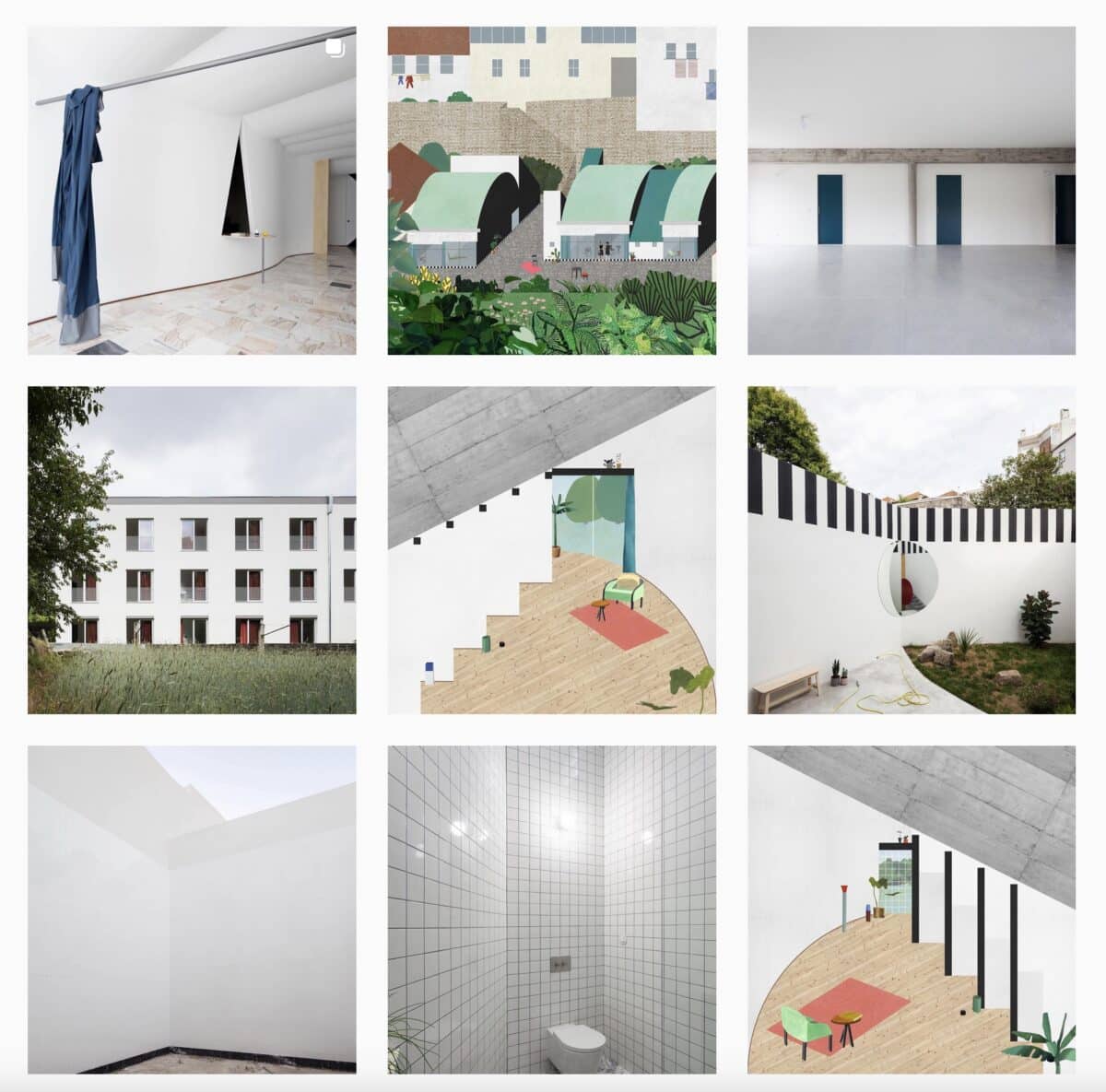
These images, in effect, disaggregate each project into a field of moments—be it a photograph of a corner of a room with a sink and some tiles or a collage of a room made from cut-outs of paper and figures from paintings. It is difficult for their audience to relate each of those images to one another or to understand which project they come from. Fala themselves have described their work as a ‘network’ of repeated parts.[16] All this could be said to simply reflect the mechanisms of the new media itself, yet Fala have also internalised the logic of decontextualization and purposefully used it in other media, such as their website, to challenge the traditional manner in which architects’ websites more often present correlations of plans, sections, elevations, axonometrics, and perspectives to represent a building as a complete whole. Fala detach their representations fully from this whole by randomly reshuffling the grid of images on their website according to heteroclite categories reminiscent of Foucault’s famous account of Borges’s ‘Chinese encyclopedia’:[17] ‘mirrors,’ ‘columns,’ ‘proud patterns,’ ‘curtains,’ ‘white haven,’ ‘pretentious kitchens,’ ‘stepped surfaces,’ ‘unveiled structure,’ ‘kitchen hats,’ etc. Again, it is the tailoring of such images for the medium itself, which in turn comes to further inform the nature of their creative work, as they design their projects for such a mediation of networked parts.
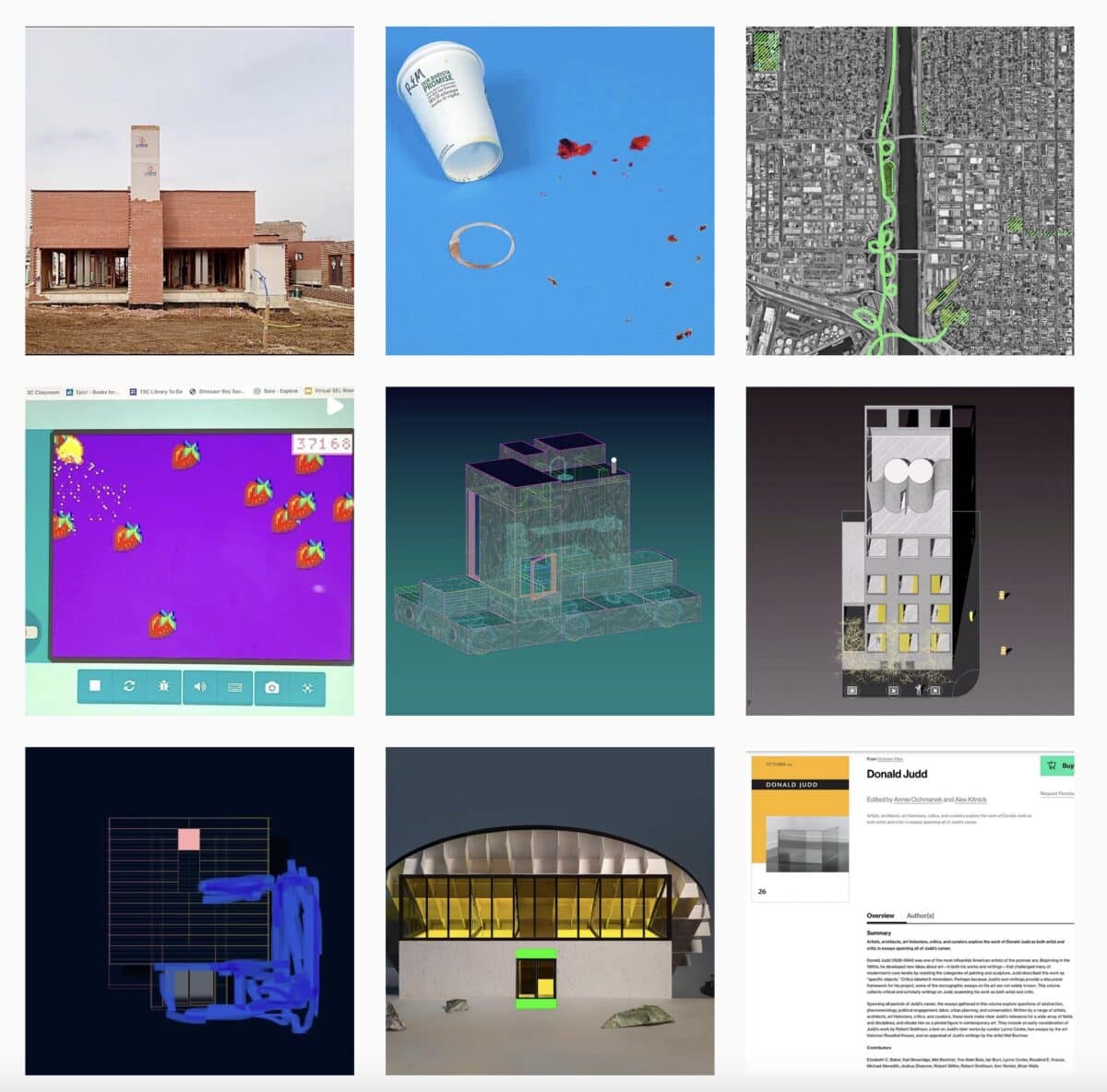
Finally, Meredith’s use of image-based media is symptomatic of the way that elite users of such media platforms thrive through the precise calculation of ambiguity. The images posted by MOS Architects on Instagram (fig. 17.6) are thus not simply publications of their works, but equally expressions of their overall curation of their feed. The choice to show—a finished building, sketches, publications on a desk, numbered rocks, a coffee cup said to have once been used by Rem Koolhaas, an amusing set of cabinets, job postings advertising a very ‘boring project’—all signal the distinctions of a particular taste culture, one trained through art historical study (fig. 17.7)
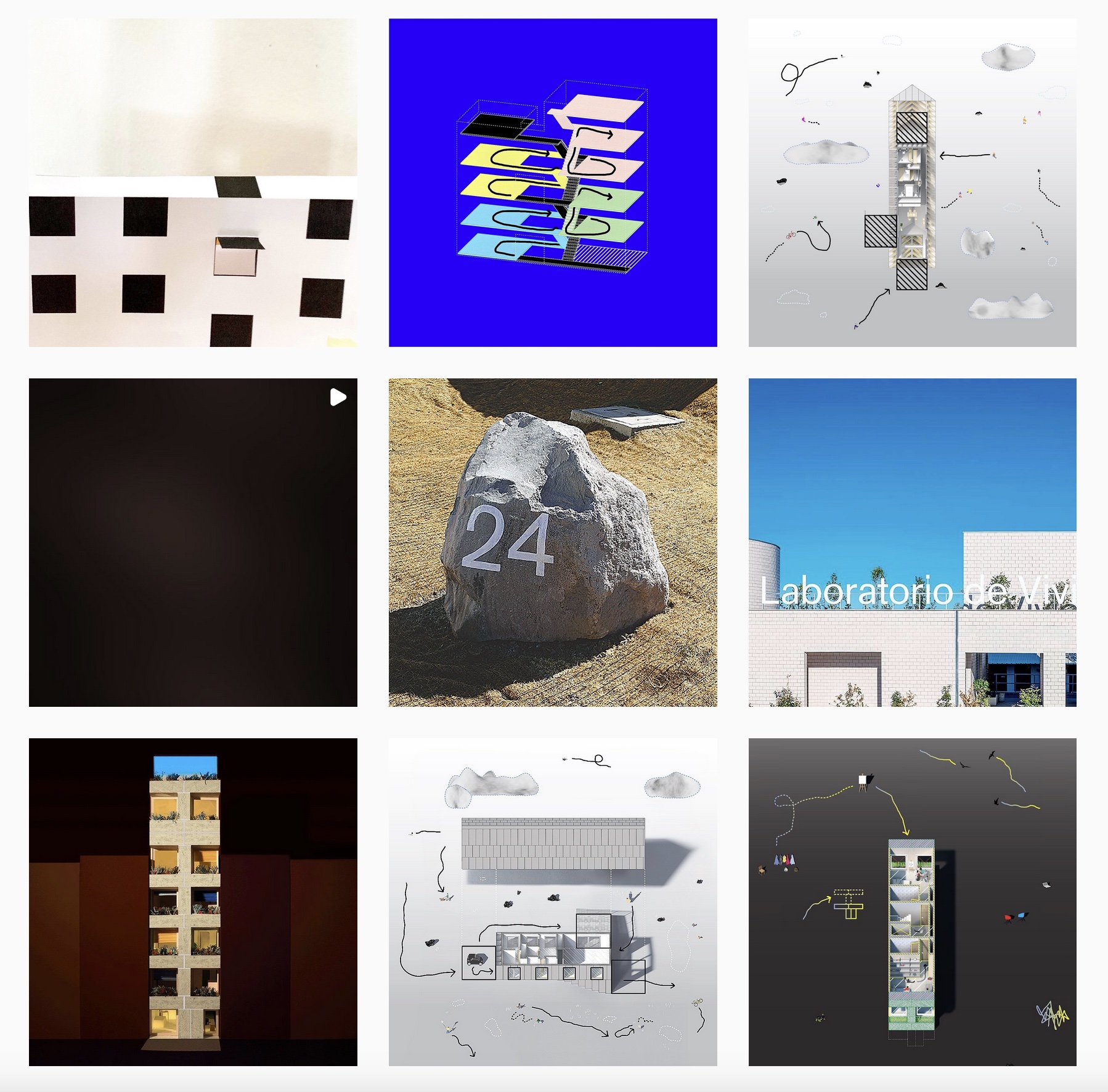
‘Calculated indifference’ is Meredith’s own way of describing a larger attitude of which his work is a part.[18] Calculated indifference is not simply another form of postmodern irony in the manner of Venturi. It is also modelled on the purposeful hesitancy, ambiguity, and irony found in recent internet culture more generally. A growing body of literature has emerged in recent years to analyse the particular sensibility of online image culture of ‘Internet Ugly’ the ‘New Aesthetic,’ and the political uses of gifs, memes by a younger generation of Millennials and Gen Z.[19]
Within this recent internet culture, images (and especially GIFs) play a dominant role precisely because they help individuals to avoid declarative commitments in communications and help them remain ironic and ambiguous. Images are indeed more laconic than words. When one searches for a GIF to send a friend in a chat, one is translating words with a greater degree of clear meaning and rationality into images, which carry a greater degree of affective emotional content, and which remain open to interpretation depending on the context. Very often, such ambiguity is tied quite self-consciously to a resistance to make any clear political or ideological claims.
Meredith is attuned to this sensibility in ‘indifference, again’ when he explains the attitude of the work of young architects such as Lai, Kovacs, and his own practice, MOS Architects, as an expression of some kind of ‘refusal’ of the current social, economic, and political situation. His choice of the term ‘indifference’ was inspired by the use of the term by the art critic Moira Roth in 1977 to indicate a ‘deliberately apolitical’ stance.[20] Though Meredith is quick to assure his reader that, today, indifferent architects are not truly politically indifferent, but they are performing indifference as a means to ‘cool down’ aesthetics, detaching it from politics.[21] Meredith describes the aesthetic he has in mind as ‘the ugly, the ironic, the awkward, the absurd, the cute, the humorous, the ambiguous, the banal,’[22] and he assumes that, in contrast to high-production Hollywood films, big-budget advertising, or presidential campaigns, this aesthetic will precisely be critical by its very ‘low-res’ nature.
In responding to a critique of his position, Meredith clarified in a subsequent issue of Log the degree to which he hoped that such an aesthetic of indifference would nonetheless be a continuation of a kind of Enlightenment model of debate and deliberation: ‘I subscribe to Wolfflinian models of art history or architecture. I believe in comparison. I believe in everything being in conversation. […] How do we look at work together? How do we discuss it?’[23] Yet in the context of the media change from institutions such as Zone, Semiotext(e), October, and Assemblage to that atomised and indeterminate architectural pot luck that Meredith identifies, the question would be as follows: In what ways does that shift facilitates conversation and discussion? Architects are still discoursing. They communicate today perhaps more than ever, and on a larger scale, reaching ever-larger or ever-more targeted audiences. Yet the new media has changed the way that that discourse operates to build a discipline, an institution, and a public sphere. As we have seen, architects are now operating within the media channels that were created to cultivate casualised production, and their creative work is being transformed in subtle ways in relation to their use of such media, blurring the boundary between life and work, celebrating the loss of authorship, or the creation of discrete works, and their replacement by a so-called ‘hive mind,’ a drip feed, a network, or the infinitely equivalent recombination of parts.
In Meredith’s case, with whom we began and with whom we end, there is a hope that image-based media can still carry a form of communicative rationality through the performance of aesthetic judgement in a social and professional network. Instagram does operate in these terms, which is likely why it has been so attractive to architects. For most users of Instagram, its attraction is in the ability to curate images to communicate rapidly a kind of signature of a person’s tastes to make quick judgements about whether one wants to associate with another person—indeed, to perform a kind of Turing test to decide whether what has just followed you is indeed another person. It is the same complex signature of taste that also enables those architects who operate within the legacy of neo-avant-garde theoretical architectural discourse in the United States to distinguish themselves through aesthetic production, to signal a distinctive taste, and to consider themselves to be engaged in a kind of meta discussion and conversation about subtle variants of aesthetic work.
Yet Meredith does so at the expense of no longer engaging as much in the production of long-form written arguments. Whether such an image-based discourse can constitute a public sphere in the manner once constituted by literate discourse is doubtful. Without clearly articulated argument being presented in unambiguous form, in fora that draw consistent participants together, it is not clear how architectural discourse can operate in a critical manner, and it is all too easy, as these four case studies suggest, for the medium to become the message and for the power of control to shape the very efforts of architects to build a critical public sphere through their discourse.
Notes
- Michael Meredith, ‘2,497 Words: Provincialism, Critical or Otherwise,’ Log 41 (Fall 2017): 169.
- Editorial, Oppositions 2 (January 1974). Agrest’s Princeton course was a weekly Tuesday lecture within the Arc 301 Values, Concepts and Methods course in autumn 1972.
- For a summary of this discourse, see W. J. T. Mitchell, ‘Medium Theory: Preface to the 2003 Critical Inquiry Symposium,’ Critical Inquiry 30, no. 2 (2004): 334–335.
- Stan Allen, Untitled Article, Assemblage 41 (April 2000): 8; and Michael Speaks, ‘Theory was interesting… but now we have work: No hope no fear,’ Architectural Research Quarterly 6, no. 3 (September 2002): 211.
- Meredith, ‘2,497 Words,’ 170.
- Frida Beckman, ‘Postcritique and the Leakiness of Spheres,’ Symploke 28, no. 1 (2020): 523–526.
- Jürgen Habermas, The Structural Transformation of the Public Sphere: An Inquiry into a category of Bourgeois Society (Cambridge, MA: MIT Press, 1989). Original published in German in 1962.
- Frida Beckman, Culture Control Critique: Allegories of Reading the Present (Lanham: Rowman & Littlefield, 2016). Gilles Deleuze, ‘Postscript on the Societies of Control,’ October 59 (1992): 3–7.
- Shoshana Zuboff, The Age of Surveillance Capitalism: The Fight for a Human Future at the New Frontier of Power (New York: Public Affairs, 2017); Jaron Lanier, Ten Arguments for Deleting Your Social Media Accounts Right Now (New York: Picador, 2018); Richard Seymour, The Twittering Machine (New York: Verso, 2019).
- Marshal McLuhan, Understanding Media: The Extensions of Man (New York: McGraw- Hill, 1964); Walter Ong, Orality and Literacy (London: Methuen & Co., 1982).
- Kyle Miller et al., eds., Possible Mediums (New York: Actar, 2018).
- Janor Lanier, You Are Not a Gadget (New York: Vintage, 2010).
- See Michael Meredith, ‘Indifference, Again,’ Log 39 (Winter 2017): 79. See also Jimenez Lai, ‘Between Irony and Sincerity,’ Log 46 (Summer 2019). The events in question are: Firmness, Commodity, Delight Symposium at Princeton in 2014; the Chatter: Architecture Talks Back exhibition at the Art Institute in Chicago in 2015; the Treatise Series of books curated by Lai between 2013 and 2015; the first Chicago Architecture Biennale in 2017; the Inscriptions exhibition at Harvard Graduate School of Design in 2018; the Possible Mediums project run as a series of workshops from 2013 on; and finally published as the book Kyle Miller et al., eds., Possible Mediums, and Meredith’s own exhibition, 44 Low- resolution Houses, at Princeton in 2018, published as Michael Meredith, 44 Low-resolution Houses (Princeton: Princeton School of Architecture, 2018).
- Franco ‘Bifo’ Birardi, The Soul at Work: From Alienation to Autonomy(Los Angeles: Semiotext(e), 2009).
- Birardi, The Soul at Work, 76.
- Ahmed Belkhodja in interview with the author (8 October 2020).
- Michel Foucault, ‘Preface,’ in The Order of Things: An Archaeology of the Human Sciences (London: Routledge, 2002), i.
- Meredith, ‘Indifference,’ 79.
- Nick Douglas, ‘It’s Supposed to Look Like Shit: The Internet Ugly Aesthetic,’ Journal of Visual Culture 13, no. 3 (2014): 314–339.
- Meredith, ‘Indifference,’ 76.
- Meredith, ‘Indifference,’ 79.
- Meredith, ‘Indifference,’ 79.
- Michael Meredith in conversation with Mark Foster Gage and Michael Young, ‘MMM: Multiple Resolutions,’ Log 46 (Summer 2019): 14, 17.
